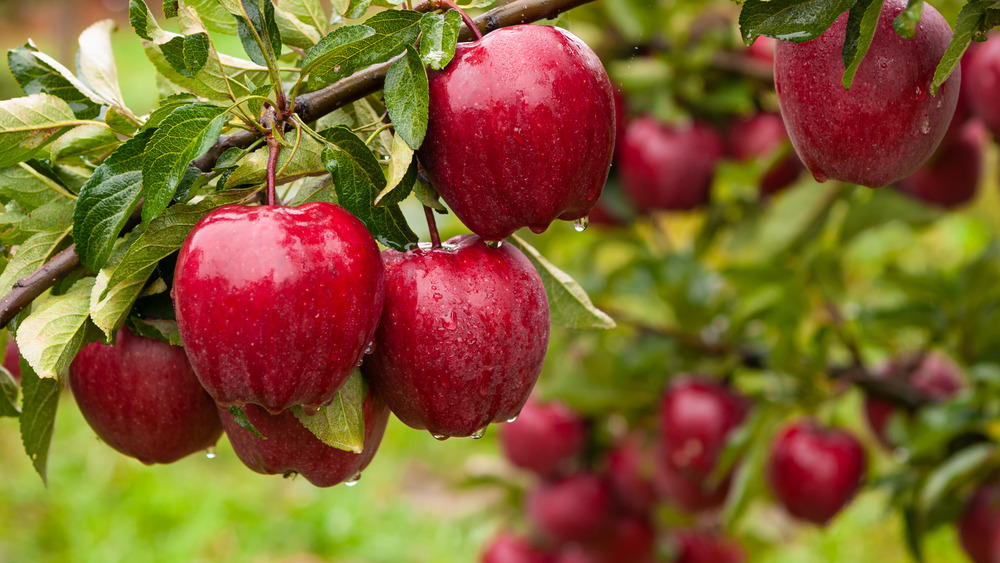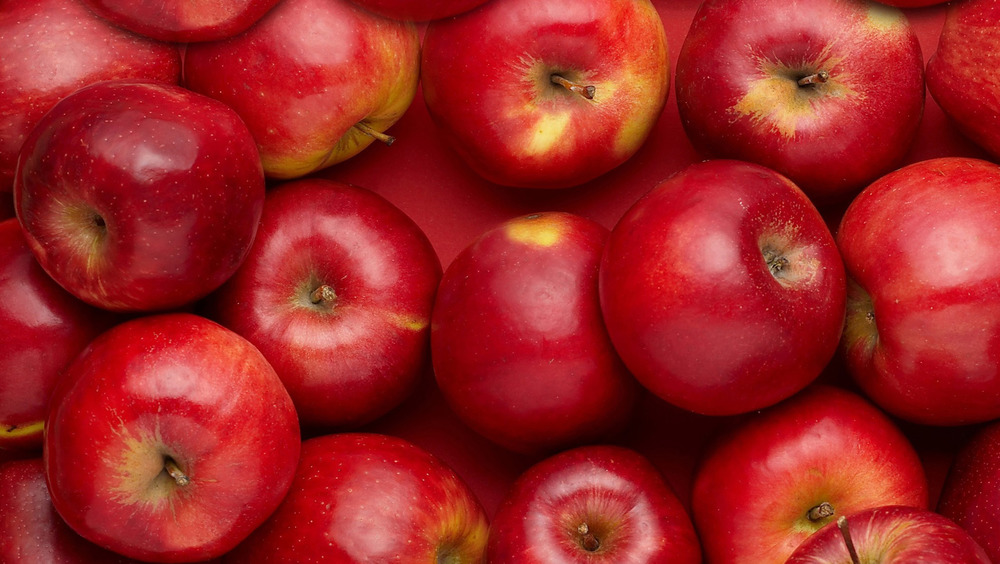The Real Reason Red Delicious Apples Aren't Actually Delicious At All
When ruminating on all things food, it can be argued that there is no food quite as ubiquitous as the apple. The apple arises in almost every facet of life, whether ensconced in proverbs like "an apple a day keeps a doctor away," used in the mythical concept of something "as American as apple pie," gleaming on the desk of a beloved teacher, or representing enormously layered symbolism in the Garden of Eden, the apple is inescapable. Is it obvious now that an apple a day doesn't actually keep the doctor away? But, beyond that, what else have we learned about the iconic fruit?
Aesthetically, the Red Delicious apple just might be the essence of what we've come to expect from apples: taut skin, off-white flesh, a subtle aroma, and bright red skin that almost glows. Does it taste all that good, though? In her piece in The Atlantic, Sarah Yager notes that the Red Delicious apple is "alluring yet undesirable, the most produced and arguably the least popular apple in the United States." With better-tasting varieties such as the Granny Smith, Honeycrisp, Cosmic Crisp, and so on, the taste for the Red Delicious has waned since its introduction generations ago.
Just how delicious is a Red Delicious?
The Washington Post notes that the apple crop that would produce the Red Delicious was first grown in Iowa in 1880. It was soon updated, altered, and revamped. The fruit was originally greenish-yellow and called the "Hawkeye" by farmer Jesse Hiatt. The original Red Delicious soon caught the eye of Clarence Stark, who renamed it the "Stark Delicious" in the hopes of selling as many apples as possible with the positive name. The Stark Delicious was even sold at the 1904 Worlds Fair, according to The Atlantic, before it was purchased and renamed the "Red Delicious" in 1914. Initially, it was incredibly popular, but that all began to change decades later.
In 2000, The New York Times deemed the ideal Red Delicious as a "health food that would look as dazzling as an ornament on a Christmas tree." However, pursuing the "perfect" apple eventually led to an immense loss of money. "Between 1997 and 2000, US apple growers lost nearly 800 million in surplus crop," states The Atlantic. The 'perfect apple' has now proven to be anything but. While they may look great, most now agree that their flavor leaves much to be desired.
While the Red Delicious variety is not nearly as popular as it once was, apples themselves are still an unbeatable snack, baking ingredient, and nostalgic symbol. Thanks to traditions like apple picking in autumn and baking apple pies, the iconic fruit is sure to stand the test of time.

